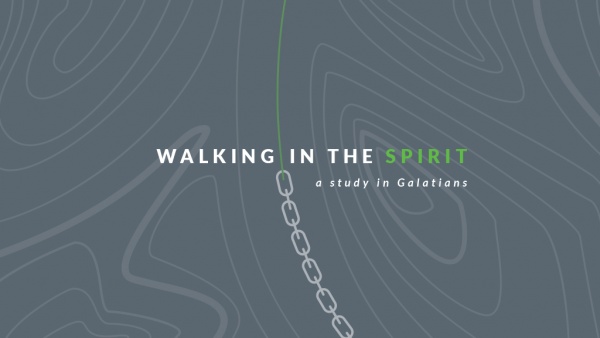Can you think of a time when you introduced yourself to someone for the first time? Perhaps it was a relative at a family reunion or the parents of a special friend or a prospective employer. How about a group of Christians in another country for whom you had been praying? If you had only one opportunity, what would you be sure to say? How would you try to encourage and inspire them? The book of Colossians gives us Paul’s answer to these questions.
The Setting
Colossae was located in Phrygia, a region in western Asia Minor (now Turkey). In the centuries before Jesus’ birth, the city had been an important, well-populated stop on the trade route from Ephesus to the Euphrates. Colossae was known for its textile industry, particularly a deep red wool.[1] However, by the time Paul wrote to the Colossian church in the early ’60s, the city was declining and was overshadowed by nearby Laodicea and Hierapolis.[2] In fact, around that same time, an earthquake devastated the region, and Colossae apparently never recovered.
What makes this epistle distinct from Paul’s other letters is that the apostle evidently had not personally established the church at Colossae. These Christians had “not seen (Paul’s) face in the flesh” (2:1). Instead, they had heard the gospel through the faithful ministry of Epaphras, Paul’s colleague (1:7–8). He was from Colossae — “who was one of you” — (4:12) and had probably been converted during Paul’s ministry in Ephesus, 110 miles west of his hometown (Acts 19:10). Paul confirms Epaphras’ credibility by announcing that his message was the same Gospel being blessed by God throughout the whole world (Col. 1:5–6). After pastoring the Colossian church for several years, Epaphras journeyed to Rome in order to update Paul about the condition of the churches of the Lycus Valley (Colossae, Hierapolis, Laodicea) and secure Paul’s direction about the errant teaching that had infiltrated the Colossian church. We learn in Philemon that, while in Rome, Epaphras became Paul’s “fellow prisoner” (Phm. 1:23), which meant that Tychicus returned with the letter to the Colossians instead of Epaphras (Col. 4:7).
The problems that Paul addresses in this letter indicate that a similar mixture of religious beliefs had found its way into the church.
The Colossian church consisted primarily of Gentile converts (1:27), which is to be expected. However, Jewish instruction had existed in Colossae through synagogues. Because this town had been a trade center where commodities and ideas were exchanged constantly for centuries, the Judaism taught in these synagogues was not as pure as in Jerusalem. The problems that Paul addresses in this letter indicate that a similar mixture of religious beliefs (often called syncretism) had found its way into the church. As one commentator puts it,
The synagogues had a reputation for laxity and openness to speculation drifting in from the Hellenistic world. In the Colossian church we appear to be in touch with a meeting-place where the free-thinking Judaism of the dispersion and the speculative ideas of Greek mystery-religion are in close contact.[3]
The Author
Paul wrote this letter while under house arrest during his first imprisonment in Rome. During this time, he also wrote the other Prison Epistles — Ephesians, Philippians and Philemon. The purpose of his imprisonment is clear. He asks the Colossians to pray that God would open doors “to speak the mystery of Christ (i.e., the Gospel), for which I am also in bonds” (Col. 4:3). Although this particular letter does not indicate whether or not he expects to be freed, we know from Philippians that Paul is hopeful (Phil. 1:25).
Whether imprisoned for Christ’s sake or being released to continue His mission, Paul exalts Christ as the center of his life and ministry. He was persuaded that “Christ, … is our life” (Col. 3:4), and this conviction permeates his letter to the Colossians. It did not matter that he was incarcerated or that he had never met these believers or that they already knew the Gospel and had become converts. He had an opportunity to share his heart, and that meant exalting Christ.
The Situation
What did Paul think was important enough to include in this letter back to Epaphras’ congregation? He does not indicate his purpose for writing until the beginning of the second chapter, where he unveils a dual concern: that believers whom he has never met would grow in their knowledge of Christ, and that they would recognize and refuse the heresy that had infiltrated their ranks (2:1–5). Fortunately, this was no full-blown heresy. Paul gives approval and affirmation throughout the epistle. He calls them “saints and faithful brethren in Christ” (1:2). He thanks God for their faith in Christ and love “to all the saints” (1:4) “in the Spirit” (1:8). They unquestionably “knew the grace of God in truth” for the Gospel had “(brought) forth fruit” (1:6) among them, just as it was doing in the rest of the inhabited world. Paul even observes their “order, and the stedfastness of (their) faith in Christ” (2:5). But in spite of their seemingly vibrant and solid faith, the Colossians faced significant danger.
What was so dangerous? Though opinions abound concerning the heresy in Colossae, it seems to have involved both pagan and Jewish aspects. What were its characteristics? First, Paul mentions spiritual rulers and authorities several times (1:16; 2:8, 10, 15, 20). These are the evil powers over whom Christ triumphed on the cross (2:15). Paul refers to them as “the rudiments (or elemental spirits) of the world” (2:8), thereby indicating that they rule among the physical domain of this world, not in the presence of God. The temptation was to fear such spirits and seek to appease them through mystic and ascetic practices (2:18, 20–21).
Second, Paul frequently mentions the Creator and creation (1:16–17, 23; 3:10). What problem does this expose? On one hand, the false teachers advocated asceticism by which man can distance himself from the polluted world and, therefore, progress spiritually (2:18, 23). On the other hand, angelic spirits were seen not only as intermediaries but also as authoritative agents of creation, perhaps on par with Christ. If angels enabled access into God’s presence, gaining the angels’ favor would be vital to successful religion.
A third element of the errant Colossian teaching was reliance on philosophical reasoning and human tradition (2:8, 18, 21–23). Although there is such a thing as good tradition, in this context, Paul directly contrasts the term tradition with Christ (2:8). The heresy had the appearance of wisdom but was humanly concocted instead of being ordinances received from God (1 Cor. 11:2).
Fourth, some Jewish practices had been identified as crucial to sanctification — “in meat, or in drink, or in respect of an holyday, or of the new moon, or of the sabbath days” (Col. 2:16). This was not the first church Paul had to warn about the error of relying on external practices (works) instead of faith alone (see Gal. 5:1).
A fifth problem involved a contradictory and unbiblical response to fleshly desires. On one hand, the false teachers pressured the people to observe earthly regulations concerning items not to be touched or eaten (Col. 2:20–21). This physical severity, however, failed to prevent “the satisfying of the flesh” (2:23). In fact, the false sense of spiritual fullness that was derived from these practices probably fostered license among some (3:5–8). They had an external “form of godliness,” but their experience was actually “denying the power thereof” (2 Tim. 3:5).
Overall, the false theology encouraged Colossian believers to seek satisfaction in and swear allegiance to intermediary powers and practices. The desire to experience fullness resulted in additions to the Gospel — doctrines and practices they thought would supply an entrance into more knowledge and an elevated status. The promise of immediate spiritual satisfaction seemed superior to steady growth in Christ alone.
The Message
In response to this multi-faceted error, Paul unequivocally proclaims: “Ye are complete in Him” (Col. 2:10). You can see the centrality of Christ in this epistle merely by scanning its pages. References to Christ occur approximately 65 times in its 95 verses. The letter evidences its Christological focus in each major section.
- In his greeting, Paul calls himself “an apostle of Jesus Christ” and refers to the Colossians as “faithful brethren in Christ” (1:1–2).
- He gives thanks for their “faith in Christ Jesus” (1:4) and shares his prayer for their spiritual maturity in Christ (1:9–14).
- His hymn declares Christ’s supremacy over both Creation and the church (1:15–23).
- In Paul’s own mission, Christ is the message, the goal of Christian maturity, and the enabling strength by which Paul ministers (1:24–2:5).
- Christ is the source of Christian growth (2:6–7) and the antidote for false religion (2:8–23).
- Paul specifically applies his response to the Colossian problem by explaining that fullness and maturity in Christ lead to eternally-focused living (3:1–4:1).
Christ is not just the dominant topic of this Pauline epistle; He is the heart of Paul’s message. The Colossians craved the inside track, and Paul had it: “Christ in you, the hope of glory” (1:27). What these Christians needed was not angelic mediation, Mosaic customs or monkish abstinence from God’s good gifts. All believers, whether first century Colossians or 21st century Americans, possess Christ. This is “the mystery which hath been hid from ages and from generations, but now is made manifest to (God’s) saints” (1:26). We are privy to “all the treasures of wisdom and knowledge” (2:3) simply by being in Christ. Christ powerfully worked in Paul to proclaim his Lord so that he and his missionary team might “present every man perfect in Christ” (1:28).
To counter the syncretistic theology that had crept in, Paul declares that Christ alone is supreme and sufficient. All necessary knowledge, fullness, authority, revelation and salvation dwell in the resurrected Christ, who indwells His people (see Rom. 8:10). Twenty centuries have passed since Paul wrote this letter, but the necessity of focusing on Christ has not. In fact, it is so important that our next chapter is a more in-depth look at what Colossians teaches about Christ.
Notes
[1]Douglas J. Moo, The Letters to the Colossians and to Philemon, The Pillar New Testament Commentary (Grand Rapids, Mi.: Eerdmans, 2008), 26.
[2]P. T. O’Brien, “Colossians, Letter to the,” Dictionary of Paul and His Letters, ed. Gerald F. Hawthorne and Ralph P. Martin (Downers Grove: InterVarsity Press, 1993), 147.
[3]Ralph Martin, Colossians and Philemon, New Century Bible, ed. Ronald E. Clements and Matthew Black (London: Marshal, Morgan, and Scott, 1974), 18–19.
This post is from Seeking Things Above: A Study in Colossians by Steve Pettit. Copyright 2016 by Bob Jones University.
This post is part of the study designed to correspond with the 2021 Spring Chapel Series. Watch the chapel message below:
Join us for chapel via live webcast at 11 a.m. every Monday.








